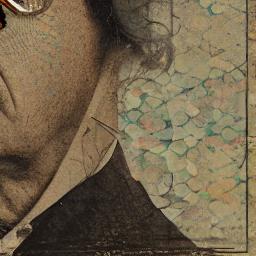Non-Fungible Tokens (NFTs) have taken the art world by storm, revolutionizing the way digital art is bought, sold, and owned. NFTs are unique, indivisible, and cannot be replicated, allowing for the creation of a digital certificate of ownership for digital assets. But how did NFTs gain widespread adoption and flourish in the art community?
The adoption of NFTs began in 2017 when the Ethereum blockchain introduced the ERC-721 standard, specifically designed for creating and trading unique tokens. This breakthrough introduced the concept of NFTs and provided a secure and transparent platform for artists, collectors, and investors to engage with digital art in a verifiable and efficient manner.

Although NFTs gained early traction in the gaming industry, it was the rise of digital art marketplaces that propelled their adoption. Platforms like SuperRare, Rarible, and OpenSea emerged as pioneers, allowing artists to tokenize their artwork, creating a digital representation (NFT) that could be bought, sold, and traded. These marketplaces enabled artists to showcase their work to a global audience and provided an opportunity for creators to monetize their digital artwork directly.
The explosive popularity of NFTs can be attributed to several factors. First, NFTs allowed artists to retain ownership and control over their work, unlike traditional art systems where physical artworks could change hands without the artist’s involvement. The blockchain technology behind NFTs guarantees authenticity, provenance, and scarcity, providing artists and collectors with a secure and tamper-proof record of ownership.
Additionally, NFTs opened up new revenue streams for artists. Through the sale of NFTs, artists can receive a percentage of each subsequent sale, creating a potential long-term income from their artwork. This revolutionary concept disrupted the traditional art market, where artists often don’t benefit from the appreciation in value of their work after the initial sale.
Moreover, the COVID-19 pandemic played a significant role in the adoption of NFTs. With galleries and physical art exhibitions temporarily shuttered, artists sought alternative ways to connect with their audience. NFTs provided a unique solution, allowing artists to engage with collectors and art enthusiasts in a digital realm.
As more high-profile artists began experimenting with NFTs, the concept gained mainstream attention and adoption. Auction houses such as Christie’s, Sotheby’s, and Phillips embraced NFTs, further validating their presence in the art world. Notably, the sale of Beeple’s digital artwork “Everydays: The First 5000 Days” for a staggering $69.3 million in March 2021 at Christie’s marked a significant milestone, cementing NFTs as a valuable asset class.
The adoption of NFTs for other applications beyond art is also expanding rapidly. Sports memorabilia, virtual real estate, music, and even tweets are being transformed into NFTs, redefining ownership and collectibility in the digital age. Celebrities and companies are leveraging NFTs to engage with their fan base, raise funds for charitable causes, and provide exclusive digital experiences.
